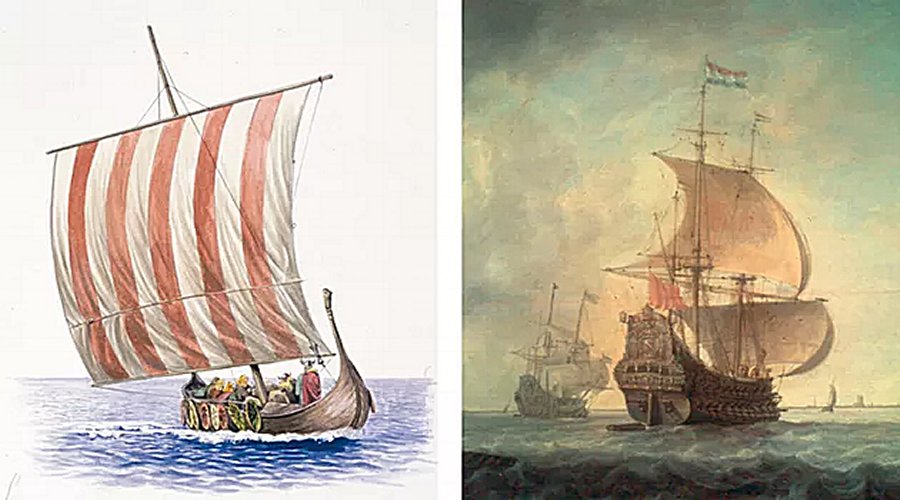A. Sutherland – MessageToEagle.com – Once upon a time, there was an important commercial center on Gotland, the island located in the Baltic Sea, approximately 90 kilometers east from mainland Sweden.
Gotland’s center of a large trading network stretched from Karelia in northern Finland down to the Caspian Sea in the south. The island flourished during Antiquity and Middle Ages and its wealth in medieval times led to the development of impressive architecture and local art.

The death came in summer 1361. When a Danish army sailed eastward summer of 1361, the Swedish king Magnus Eriksson already knew Gotland was in danger.
He did what he could; he had let issue a warning letter to the citizens on Gotland about a dangerous attack approaching the island of Gotland. The population of Gotland was preparing for the worst.

Early on the morning of Thursday July 22, the enemy fleet was clearly seen. The armada consisted of thirty ships, and large cogs, smaller shells. The rumor of the Danish attack was spreading rapidly across the island; soon all church bells rang across the island – the danger was imminent.
Soon, the Danish king, Valdemar IV Atterdag and his soldiers appeared on the horizon outside Visby’s thick city walls.
They landed on the coast of Eksta Parish, Gotland and the Danish troops moved towards Visby. The clashes began and they culminated on July 27 just outside the city walls.
The main battle was fought within 300 meters of the city of Visby’s fortifications. The extent of the incident was not finished until the day after the battle. Roughly 1,800 Gotlanders had been killed, that is, up to half of the participants – an exceptionally high loss ratio.
Following the devastating battle, the citizens of Visby decided to surrender to avoid further losses. Without outside help of fighting farmers, Visby would never been able to keep out Valdemar’s forces.
Negotiations began. To save the city from sacking, the inhabitants paid a large amount of their wealth to King Valdemar. Despite the payment, the Danes still plundered several of the town’s churches and monasteries on the island, before they left. King Valdemar appointed sheriffs to govern Visby and then set sail again. It would take another year before Valdemar officially added “King of Gotland” to his many titles.
The cruel plundering of the island by the King Valdemar definitely ended the island’s prosperity.
Sailing away, one of Atterdag’s ship carrying all the island’s treasures sunk off the Carl islands located west of Gotland.
Not long ago, a wreck made of wood has been found outside the island Gotland, at a depth of 100 meters in a secret location between the two Baltic isles. Based on the sonar pictures, experts estimated that a small vessel was 28 meters long and 7 meters wide.
No cogs have ever been found in the area despite the extent of their use and the perfect conditions of the Baltic Sea for wreck preservation.
The seabed of the Baltic is flat and the oxygen levels in the water are low enough to make it an ideal environment for wrecks to remain intact and many shipwrecks have been found in the Baltic Sea, according to researchers.
None of them, however, has been recognized as the King Atterdag’s lost ship with Gotland’s treasures.
The loot is resting somewhere in underwater realm of the Baltic Sea near Gotland.
See also:
Legendary Harald ‘Bluetooth’ King of Denmark – ‘Who Made The Danes Christian’
Battle Of Visby, Gotland Was Fought – On July 27, 1361
Cnut The Great – England’s Danish King And Ruler Of One Of The Largest Nordic Empires
There are only a few meager ancient written sources that can tell about the Battle of Visby, Gotland. Archaeological excavations, on the other hand, have found out what happened these tragic days of July 1361. Five mass graves from this medieval battle have been found outside the city wall of Visby. The first one was excavated 1905, and each grave have hundreds of victims. Between 1909 and 1928 two more mass graves were investigated.
Later investigations have shown that one third of the Gothlandic army were children, old men and cripples.
While the farmers were dying, the citizens of Visby just watched helplessly from the ramparts.
A. Sutherland – MessageToEagle.com Staff Writer
Copyright © MessageToEagle.com All rights reserved. This material may not be published, broadcast, rewritten or redistributed in whole or part without the express written permission of MessageToEagle.com
source: Masterby1361






